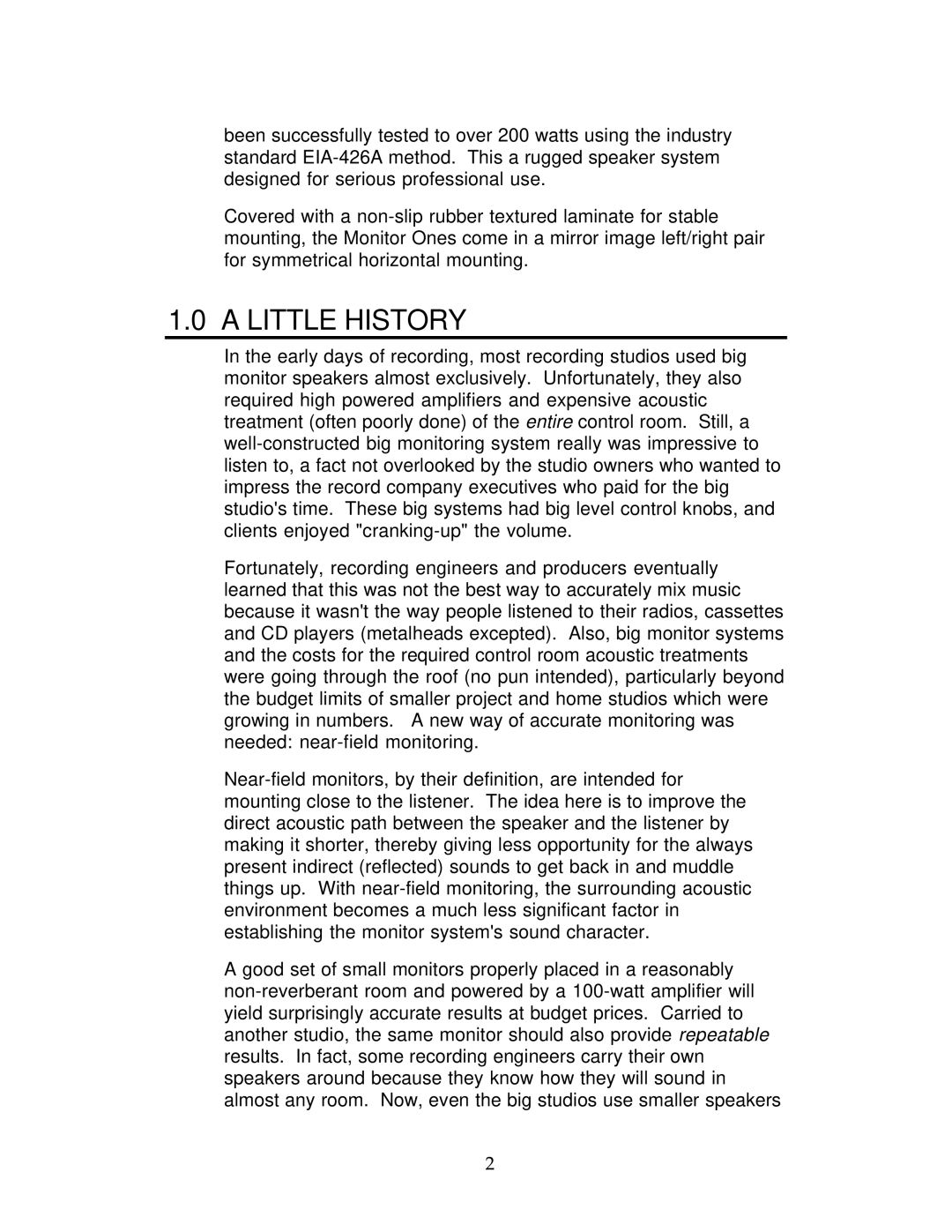been successfully tested to over 200 watts using the industry standard EIA-426A method. This a rugged speaker system designed for serious professional use.
Covered with a non-slip rubber textured laminate for stable mounting, the Monitor Ones come in a mirror image left/right pair for symmetrical horizontal mounting.
1.0 A LITTLE HISTORY
In the early days of recording, most recording studios used big monitor speakers almost exclusively. Unfortunately, they also required high powered amplifiers and expensive acoustic treatment (often poorly done) of the entire control room. Still, a well-constructed big monitoring system really was impressive to listen to, a fact not overlooked by the studio owners who wanted to impress the record company executives who paid for the big studio's time. These big systems had big level control knobs, and clients enjoyed "cranking-up" the volume.
Fortunately, recording engineers and producers eventually learned that this was not the best way to accurately mix music because it wasn't the way people listened to their radios, cassettes and CD players (metalheads excepted). Also, big monitor systems and the costs for the required control room acoustic treatments were going through the roof (no pun intended), particularly beyond the budget limits of smaller project and home studios which were growing in numbers. A new way of accurate monitoring was needed: near-field monitoring.
Near-field monitors, by their definition, are intended for mounting close to the listener. The idea here is to improve the direct acoustic path between the speaker and the listener by making it shorter, thereby giving less opportunity for the always present indirect (reflected) sounds to get back in and muddle things up. With near-field monitoring, the surrounding acoustic environment becomes a much less significant factor in establishing the monitor system's sound character.
A good set of small monitors properly placed in a reasonably non-reverberant room and powered by a 100-watt amplifier will yield surprisingly accurate results at budget prices. Carried to another studio, the same monitor should also provide repeatable results. In fact, some recording engineers carry their own speakers around because they know how they will sound in almost any room. Now, even the big studios use smaller speakers
